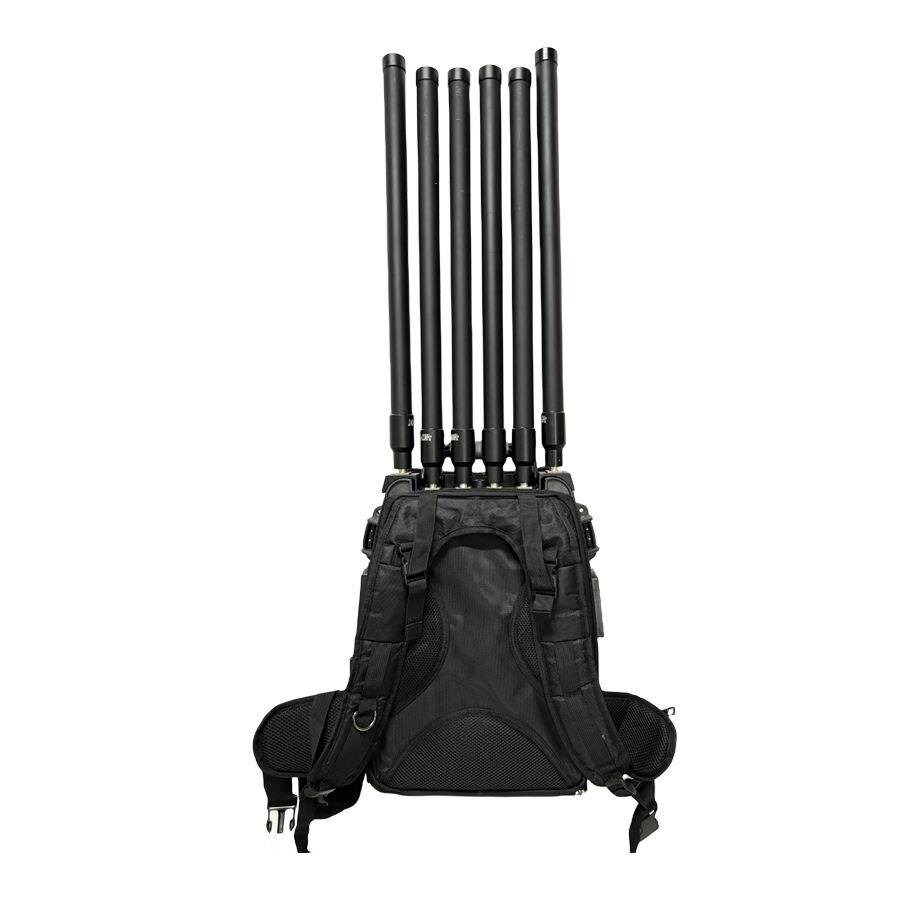Understanding Modern Drone Defense Technology
The rise of unauthorized drone activity has led security forces worldwide to adopt sophisticated countermeasures, with the drone jammer gun emerging as a crucial tool in their arsenal. These portable devices represent the cutting edge of anti-drone technology, offering a non-destructive way to neutralize potential aerial threats. By emitting targeted electromagnetic signals, these advanced systems can disrupt the communication between a drone and its operator, effectively forcing the aircraft to either land safely or return to its point of origin.
Security professionals increasingly rely on drone jammer gun technology to protect sensitive areas, public events, and critical infrastructure. These devices have proven particularly valuable in scenarios where traditional security measures fall short against aerial intrusion. The technology's ability to create an invisible shield against unwanted drone presence has revolutionized the way security forces approach airspace protection.
Core Components of Drone Jamming Systems
Signal Generation and Transmission
At the heart of every drone jammer gun lies sophisticated signal generation technology. These systems are engineered to produce precise electromagnetic frequencies that interfere with common drone communication channels. The effectiveness of a drone jammer gun largely depends on its ability to generate strong, accurate signals across multiple frequency bands simultaneously.
Modern jamming systems incorporate advanced amplification circuits and directional antennas to ensure maximum signal strength and accuracy. This technical sophistication allows security personnel to target specific drones while minimizing interference with other electronic devices in the vicinity.
Range and Coverage Capabilities
The effective range of a drone jammer gun plays a crucial role in its operational success. Professional-grade systems typically offer coverage ranging from several hundred meters to several kilometers, depending on environmental conditions and the specific model. The coverage pattern is usually cone-shaped, allowing operators to precisely target suspicious drones while maintaining a reasonable margin for error.
Advanced models feature adjustable power settings that enable operators to optimize the balance between range and battery life. This flexibility proves invaluable in different deployment scenarios, from securing small perimeters to protecting large-scale events.

Operational Effectiveness Factors
Frequency Band Coverage
The effectiveness of a drone jammer gun heavily relies on its ability to cover multiple frequency bands. Modern drones operate across various frequencies, including 2.4GHz, 5.8GHz, and GNSS signals. Premium jamming systems are designed to simultaneously disrupt all these frequencies, ensuring maximum effectiveness against different drone models.
Security forces benefit from systems that can adapt to emerging drone communication protocols. The most advanced drone jammer gun models feature upgradeable software that allows them to counter new drone frequencies as they appear in the market.
Ergonomic Design and Portability
The physical design of a drone jammer gun significantly impacts its practical effectiveness in the field. Successful models balance power and functionality with ergonomic considerations, ensuring operators can maintain accurate aim during extended deployment periods. Weight distribution, grip design, and control placement all contribute to operational efficiency.
Modern systems often incorporate lightweight materials and modular designs, allowing security personnel to customize their setup based on specific mission requirements. This adaptability ensures optimal performance across various deployment scenarios.
Advanced Features and Capabilities
Target Acquisition Systems
Leading drone jammer gun models incorporate sophisticated target acquisition capabilities. These features often include optical sights, heads-up displays, and sometimes even radar integration. Such advanced targeting systems significantly improve the operator's ability to effectively neutralize drone threats, especially in challenging conditions or when dealing with small, fast-moving targets.
The integration of artificial intelligence and machine learning algorithms has further enhanced target acquisition capabilities. Modern systems can quickly identify drone types and automatically adjust jamming patterns for optimal effectiveness.
Smart Power Management
Battery life and power efficiency represent critical factors in field operations. Contemporary drone jammer gun technology employs intelligent power management systems that optimize energy consumption while maintaining effective jamming capabilities. These systems automatically adjust power output based on target distance and threat level.
Advanced models feature quick-change battery systems and support for external power sources, ensuring continuous operation during extended deployment periods. This reliability is crucial for security forces protecting high-value targets or covering large-scale events.
Integration with Security Infrastructure
Network Connectivity
Modern drone jammer gun systems often feature network integration capabilities, allowing them to function as part of a broader security infrastructure. This connectivity enables real-time threat sharing, coordination between multiple operators, and integration with central command and control systems.
The ability to connect with other security systems enhances situational awareness and improves response coordination. Security forces can leverage this integration to implement more comprehensive and effective drone defense strategies.
Data Collection and Analysis
Advanced jamming systems incorporate sophisticated data collection capabilities, recording detailed information about each engagement. This data helps security forces analyze patterns in drone activity, improve response protocols, and enhance overall security strategies.
The collected information can also support law enforcement efforts by providing evidence of drone incursions and helping identify potential threat patterns. This analytical capability represents a significant advancement in counter-drone operations.
Frequently Asked Questions
What is the typical range of a professional drone jammer gun?
Professional-grade drone jammer guns typically offer effective ranges between 500 meters to 3 kilometers, depending on environmental conditions and the specific model. Factors such as weather, terrain, and drone type can influence the actual operational range.
How does a drone jammer gun affect other electronic devices?
Modern drone jammer guns are designed to minimize interference with other electronic devices through directed, frequency-specific jamming signals. However, some temporary disruption to nearby wireless communications may occur during operation, which is why operator training and proper deployment protocols are essential.
Are drone jammer guns legal for private use?
In most jurisdictions, drone jammer guns are restricted to authorized security forces and law enforcement agencies due to their potential impact on communications systems and aviation safety. Private use typically requires special permits or may be prohibited entirely.

